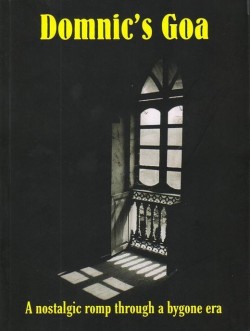
Domnic Fernandes was working in the deserts of Saudi Arabia, when he discovered Goan networks in cyberspace, and started to share his writings there. The rest just fell in place. Scores of readers wrote back to appreciate his memories of another day. So much so, that he decided to write and entire book. And this is the result.
This book tells you about the Goa that was… and how things existed some five to six decades ago. In thirty-one chapters, author Domnic Fernandes takes you through a nostalgic tour along yesterday’s Goa. The topics he handles include the Goan coast of the yesteryears, entertainment in the Goa of yore, coping with the monsoons, forms of transport then, religiosity, early migration to the Gulf, simple luxuries in a child’s life then, radio of the times, death rituals, alcohol in the Goa of the past, relatives, culinary science of the Goa we knew, wells, fruit, holidays and more. Among the most engrossing chapters are the one on social change in Anjuna, cinema theatres and the stereotyping of the Goan landlord in the local tiatr (theatre). Domnic is no academic, he’s just telling the story as he knew it.
We see and experience life in its totality because Domnic enjoys life above all and has a sense of humor rather than being judgemental about the way people behave (although he believes that anything in excess is destructive). But he reinforces what he knows not only through study but also
through practical experimentation.
For example, he not only tells us how the ghumott is made: he takes lessons in playing traditional music and plays it in a band, even though he loves and describes international forms of music such as by Johnson and his Jolly Boys…. Domnic describes food; fruit (see the brilliant chapter, “Goa’s guest from Brazil: the cashew”); travel; religion (inevitably including St. Francis Xavier); music; liquor (and its role in the community); the making and use of wells (“the water of life”); clothing; the importance of animals (cows, pigs, etc.); the importance of cow-dung to houses; love; marriage; family relationships; the seasons; the importance of sewing skills; the church painter; tiatr; the connections between Catholics and Hindus; the different classes and castes; and funerals. — Peter Nazareth, Professor of English, University of Iowa, USA.


